Abstract
In three studies, reinforcing low rates of responding reduced inappropriate behaviors. In the first study, the talking-out behavior of one TMR student was reduced when the teacher allowed 5 min of free time for a talk-out rate less than 0.06 per minute. In a second study, the talking-out behavior of an entire TMR class was reduced when reinforcement was delivered for a response rate less than 0.10 per minute. In a third study, successively decreasing DRL limits were used to reduce off-task verbalizations of an entire high school business class. In each case, the DRL procedure proved manageable for the teacher and successful in reducing misbehavior.
Full text
PDF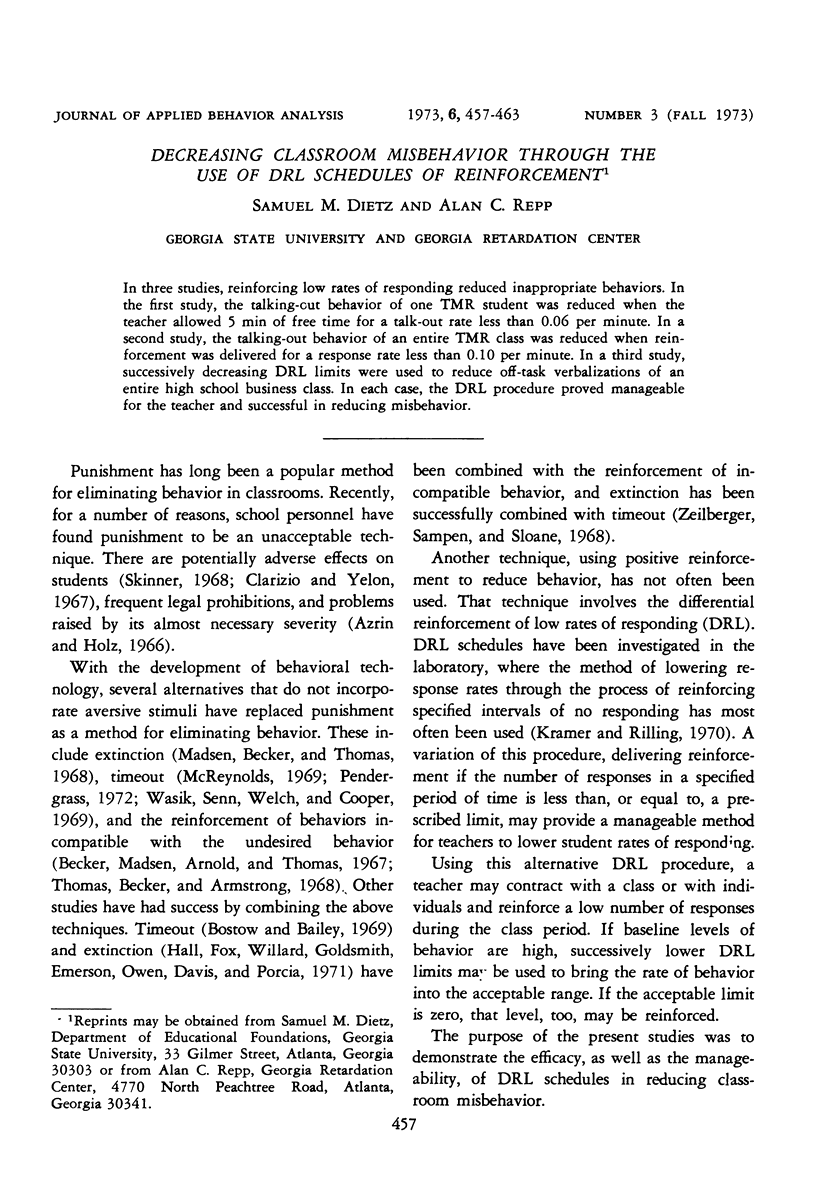
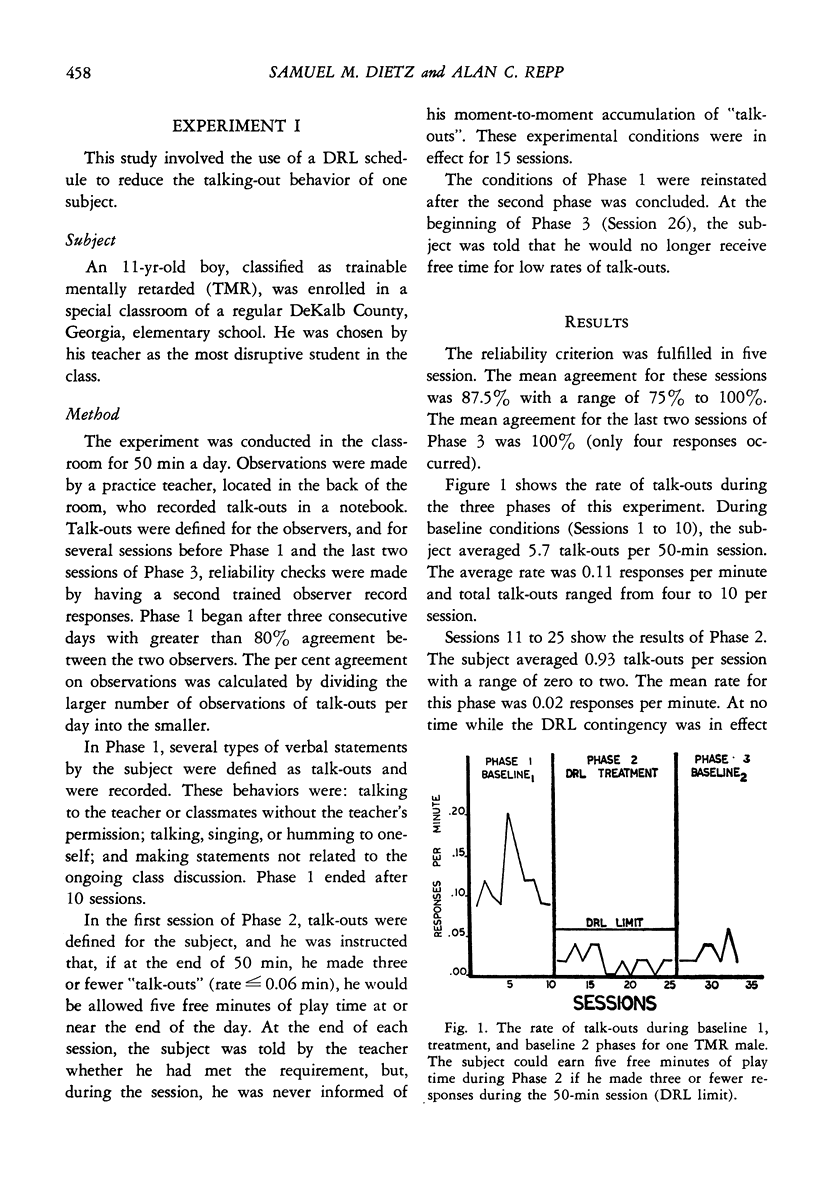

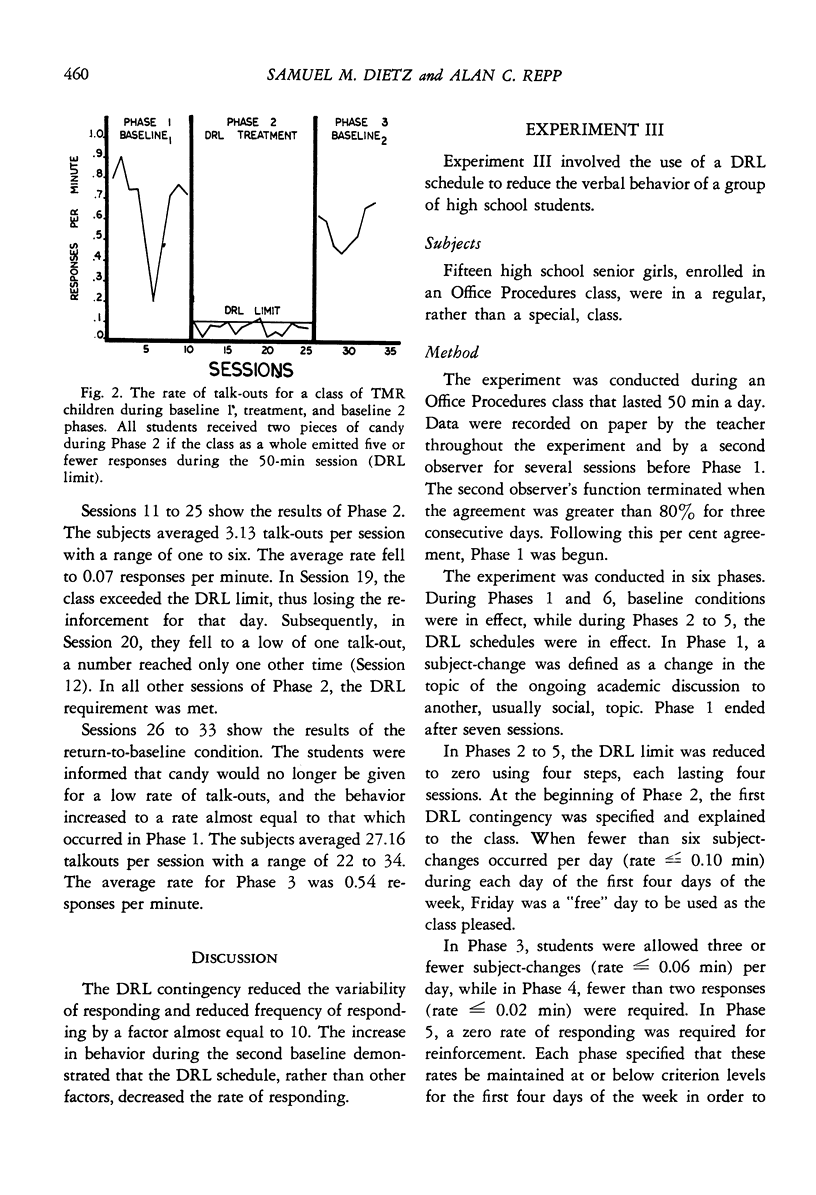
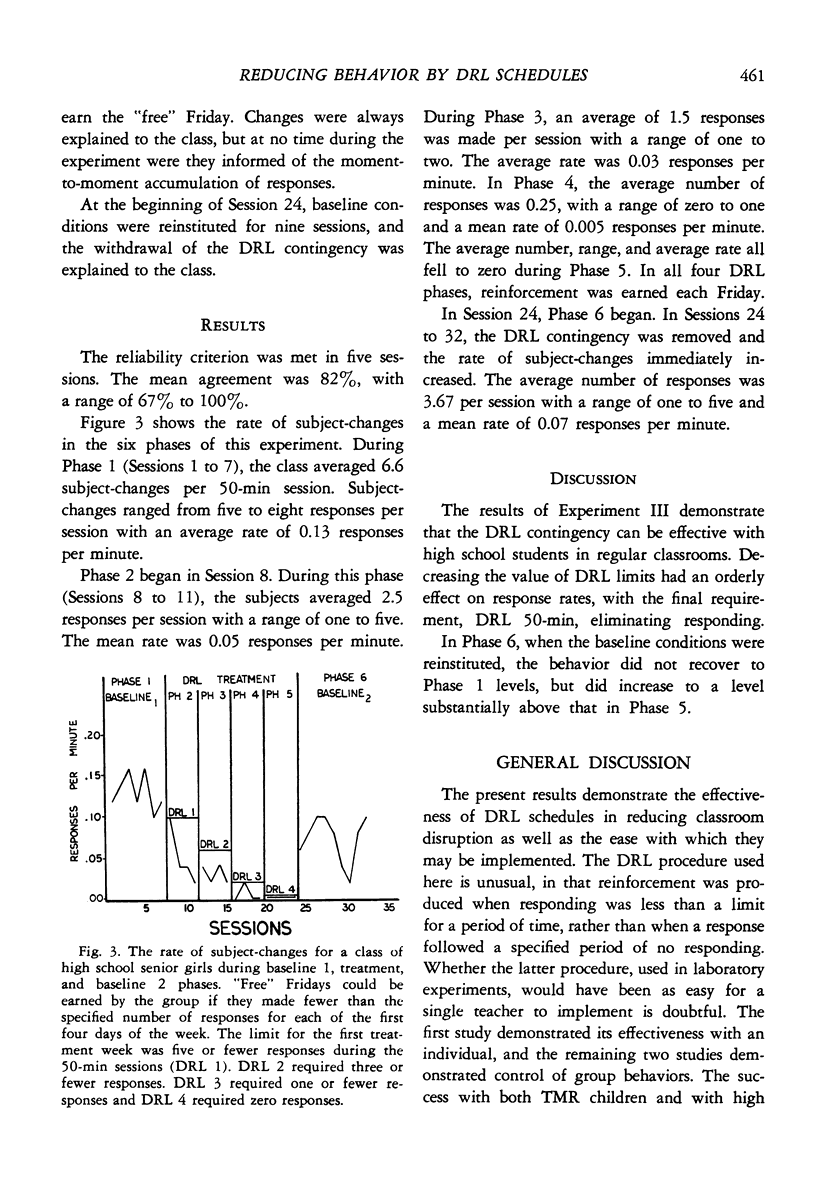

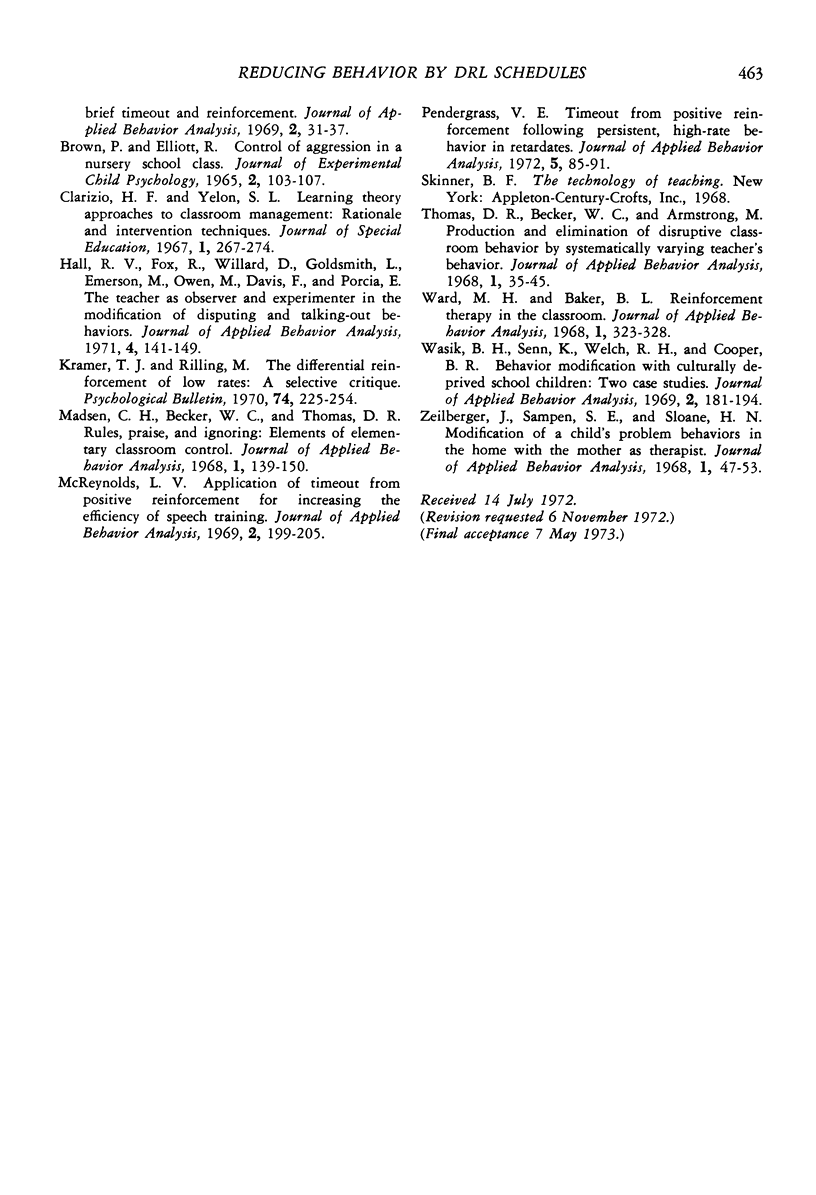
Selected References
These references are in PubMed. This may not be the complete list of references from this article.
- Bostow D. E., Bailey J. B. Modification of severe disruptive and aggressive behavior using brief timeout and reinforcement procedures. J Appl Behav Anal. 1969 Spring;2(1):31–37. doi: 10.1901/jaba.1969.2-31. [DOI] [PMC free article] [PubMed] [Google Scholar]
- Hall R. V., Fox R., Willard D., Goldsmith L., Emerson M., Owen M., Davis F., Porcia E. The teacher as observer and experimenter in the modification of disputing and talking-out behaviors. J Appl Behav Anal. 1971 Summer;4(2):141–149. doi: 10.1901/jaba.1971.4-141. [DOI] [PMC free article] [PubMed] [Google Scholar]
- Madsen C. H., Becker W. C., Thomas D. R. Rules, praise, and ignoring: elements of elementary classroom control. J Appl Behav Anal. 1968 Summer;1(2):139–150. doi: 10.1901/jaba.1968.1-139. [DOI] [PMC free article] [PubMed] [Google Scholar]
- McReynolds L. V. Application of timeout from positive reinforcement for increasing the efficiency of speech training. J Appl Behav Anal. 1969 Fall;2(3):199–205. doi: 10.1901/jaba.1969.2-199. [DOI] [PMC free article] [PubMed] [Google Scholar]
- Pendergrass V. E. Timeout from positive reinforcement following persistent, high-rate behavior in retardates. J Appl Behav Anal. 1972 Spring;5(1):85–91. doi: 10.1901/jaba.1972.5-85. [DOI] [PMC free article] [PubMed] [Google Scholar]
- Thomas D. R., Becker W. C., Armstrong M. Production and elimination of disruptive classroom behavior by systematically varying teacher's behavior. J Appl Behav Anal. 1968 Spring;1(1):35–45. doi: 10.1901/jaba.1968.1-35. [DOI] [PMC free article] [PubMed] [Google Scholar]
- Ward M. H., Baker B. L. Reinforcement therapy in the classroom. J Appl Behav Anal. 1968 Winter;1(4):323–328. doi: 10.1901/jaba.1968.1-323. [DOI] [PMC free article] [PubMed] [Google Scholar]
- Wasik B. H., Senn K., Welch R. H., Cooper B. R. Behavior modification with culturally deprived school children: two case studies. J Appl Behav Anal. 1969 Fall;2(3):181–194. doi: 10.1901/jaba.1969.2-181. [DOI] [PMC free article] [PubMed] [Google Scholar]
- Zeilberger J., Sampen S. E., Sloane H. N. Modification of a child's problem behaviors in the home with the mother as therapist. J Appl Behav Anal. 1968 Spring;1(1):47–53. doi: 10.1901/jaba.1968.1-47. [DOI] [PMC free article] [PubMed] [Google Scholar]


